Watch a virtual Stegosaurus walk around as Sir David Attenborough explains how this dinosaur would have moved.
The animation is based on one of the most complete Stegosaurus skeletons ever found. Affectionately dubbed Sophie, the specimen is on display in our Earth Hall.
It’s been laser scanned and reconstructed in virtual reality for Hold the World, a groundbreaking interactive experience that’s set behind the scenes at the Natural History Museum.
Take a sneak peek at the virtual dinosaur above and find out more about some of the features of its strange-looking body below.
Where is this specimen from?
This Stegosaurus lived about 150 million years ago during a time in Earth’s history called the Jurassic Period. It would have lived in present-day Wyoming, USA.
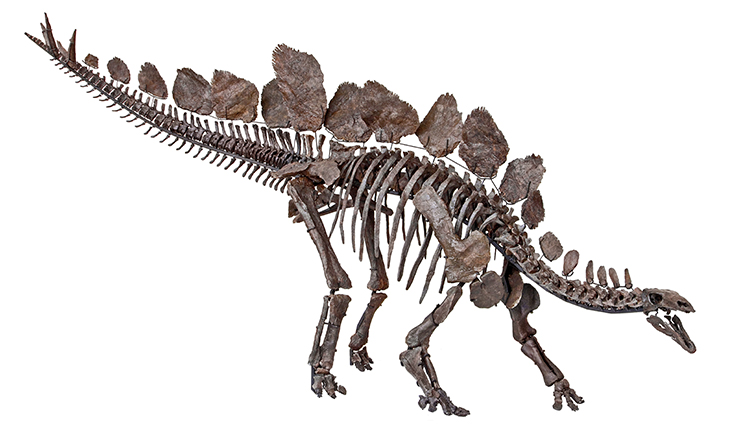
The Stegosaurus skeleton arrived at the Natural History Museum in late 2013, and went on permanent display in December 2014.
The skeleton was discovered in 2003 by professional fossil hunter Bob Simon, who was digging at a site called Red Canyon Ranch in Wyoming.
It was a special find, because most of the Stegosaurus skeletons that are found are incomplete.
Professor Paul Barrett has been a dinosaur expert at the Natural History Museum for nearly 15 years. For Paul, the day Sophie arrived was a momentous one.
“This skeleton is very special, not just because it’s complete, but also because the bones have been preserved in three dimensions instead of being squashed over time, as happens with many other fossils. So we can get a very accurate view of how the whole body looked,” he explains.
“We’ve been able to use the skeleton to really probe the biology of Stegosaurus, and this is a dinosaur that’s not been studied extensively before.”
“We’ve made virtual scans of the whole skeleton, using both handheld laser scanners, and also a CT scanner to peer inside the bones, to work on questions related to how this dinosaur fed and moved around.”
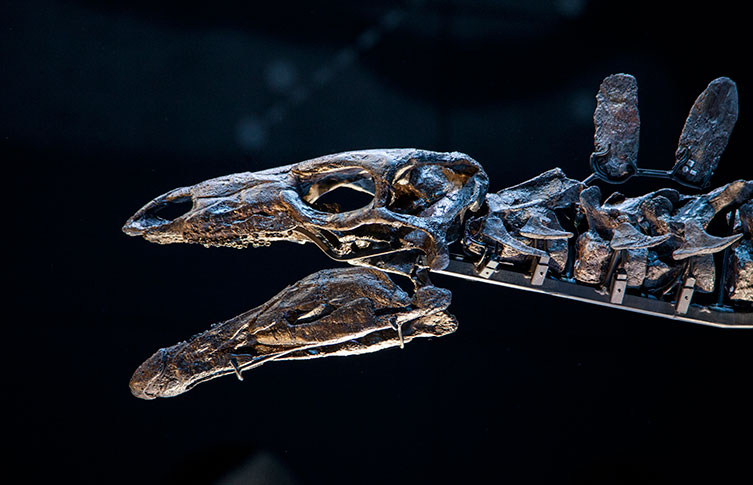
Sophie’s head is quite small. Scientists have found that Stegosaurus would have eaten ferns and tough vegetation, with a bite force similar to a cow.
How did Stegosaurus walk?
Stegosaurus moved around on all fours, but you’ll notice that Sophie’s legs are different lengths. The front legs are fairly short, while the back legs are relatively long.
That’s because Stegosaurus descended from earlier dinosaurs that walked only on their back legs. Its ancestors originally used their short front legs to pick things up and grasp them. But in Stegosaurus they’ve become modified to support its body weight.
This mismatch in arm and leg length limited Stegosaurus to a relatively clumsy, slow-moving walk. Sophie wasn’t able to run, and was certainly no athlete. She was probably limited to walking speeds similar to those of walking rhinoceroses or elephants – only a few miles an hour.
The small head of Stegosaurus
Stegosaurus has a relatively small head and mouth. Scientists have puzzled over how they managed to eat enough food to sustain such big bodies.
The teeth are the size of a little fingernail, and not particularly well-suited for grinding or crunching large amounts of plant food.
After CT-scanning Sophie’s skull, palaeontologists reconstructed her jaw muscles and worked out how hard she could bite.
“We were surprised to find that, actually, her jaws worked very efficiently, and that she had a bite force similar to that of a living cow or sheep,” says Paul. “This doesn’t sound impressive, but sheep and cows are good at grinding up and chopping plants, and it looks like Sophie was also very good at doing the same, and may have fed on a diet of ferns cycads, and other tough vegetation.”
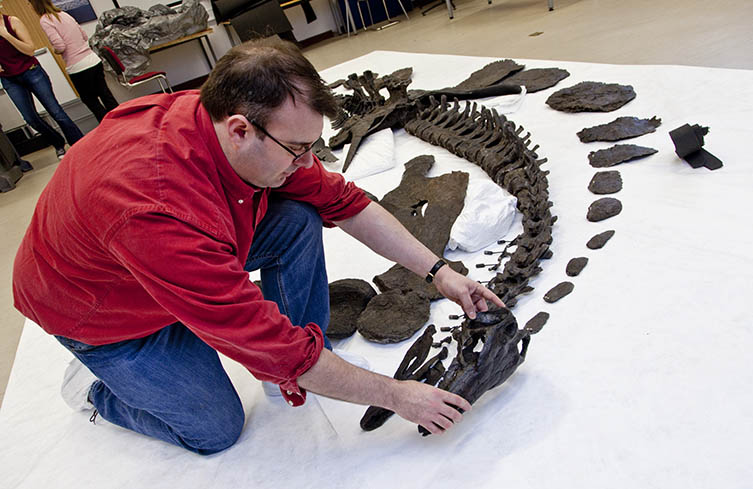
Professor Paul Barrett laying out the Stegosaurus skeleton when it first arrived at the Natural History Museum.
Did Stegosaurus have two brains?
No. There are some common misconceptions about Stegosaurus – one being it had two brains, one in its skull and one in the hips.
But it turns out that this space in the hips had nothing to do with a second brain. Rather, it’s a storage area for some food substances that allowed the dinosaurs to survive through periods of stress, when there was less food in the environment.
Why does Stegosaurus have plates?
Scientists have speculated for years about why Stegosaurus had large plates along its back.
Some early palaeontologists thought that they might have been for defence, but this idea has now gone out of fashion. The plates, although very large, are also thin and fragile.
We now think that the plates may have had one of two different functions: either for display or for regulating the animal’s temperature.
“Using the plates, Stegosaurus may have showed off to each other, displaying how big, strong and attractive they might be,” says Paul.
“The idea that it might be related to temperature also harks back to the idea that the plates are so large, and have such a flat surface area. The plates seem to have been filled with lots of blood vessels. These would have been carrying warm blood up into the plates, and they could have been used for dumping heat over the surface of those plates to help the animal cool down.”
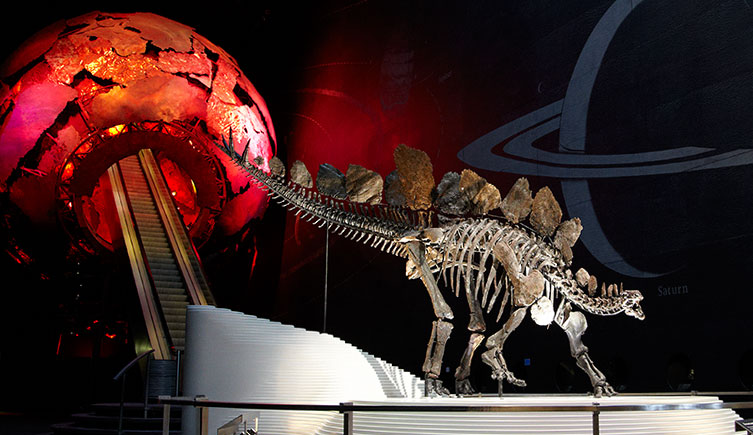
See the Stegosaurus
Visit Sophie in our Earth Hall. Admission is free.
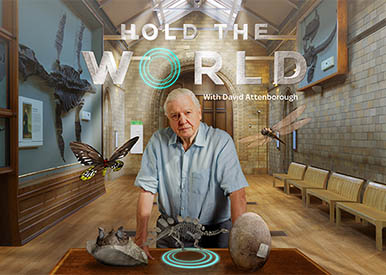
More information
- This animation was designed to be viewed via a VR headset, as part of Hold the World.
- Commissioned by the Sky VR Studio, Hold the World was produced by immersive content studio Factory 42, in association with Dream Reality Interactive and Talesmith, and through collaboration with the Natural History Museum’s digital team.
- Creature animation was produced by The Mill.
- The experience was directed by Dan Smith and executive produced by John Cassy and Neil Graham.
- The VR experience is available within the Sky VR app on Google Daydream View, Samsung Gear VR and Oculus Rift.


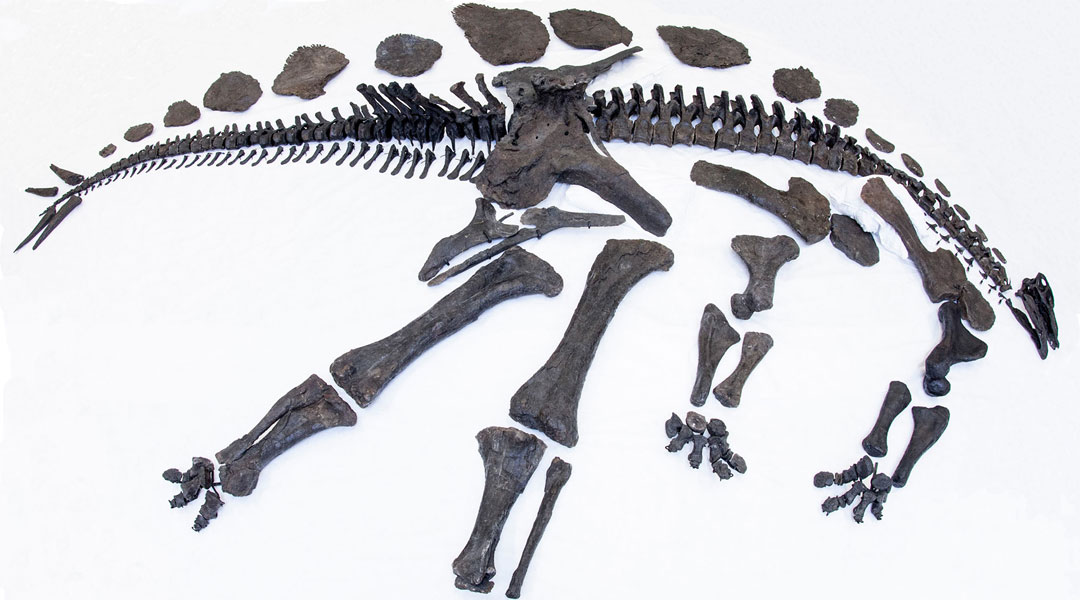

Don't miss a thing
Receive email updates about our news, science, exhibitions, events, products, services and fundraising activities. We may occasionally include third-party content from our corporate partners and other museums. We will not share your personal details with these third parties. You must be over the age of 13. Privacy notice.
Follow us on social media